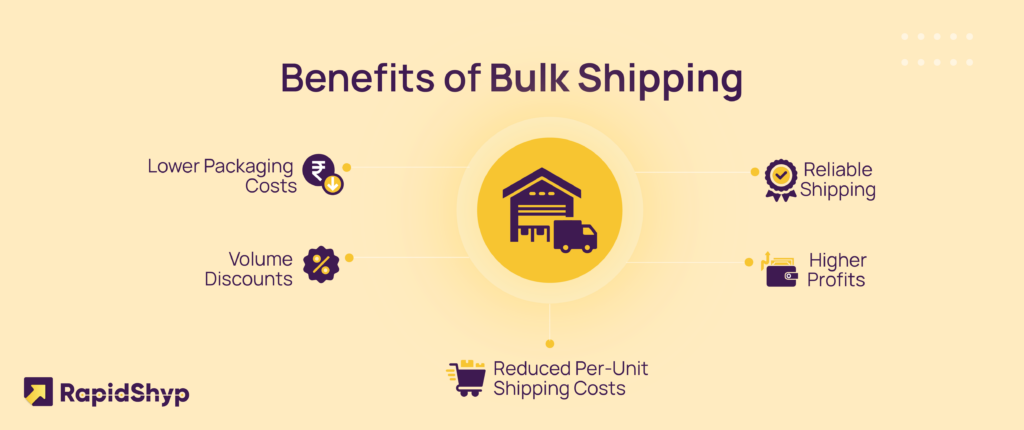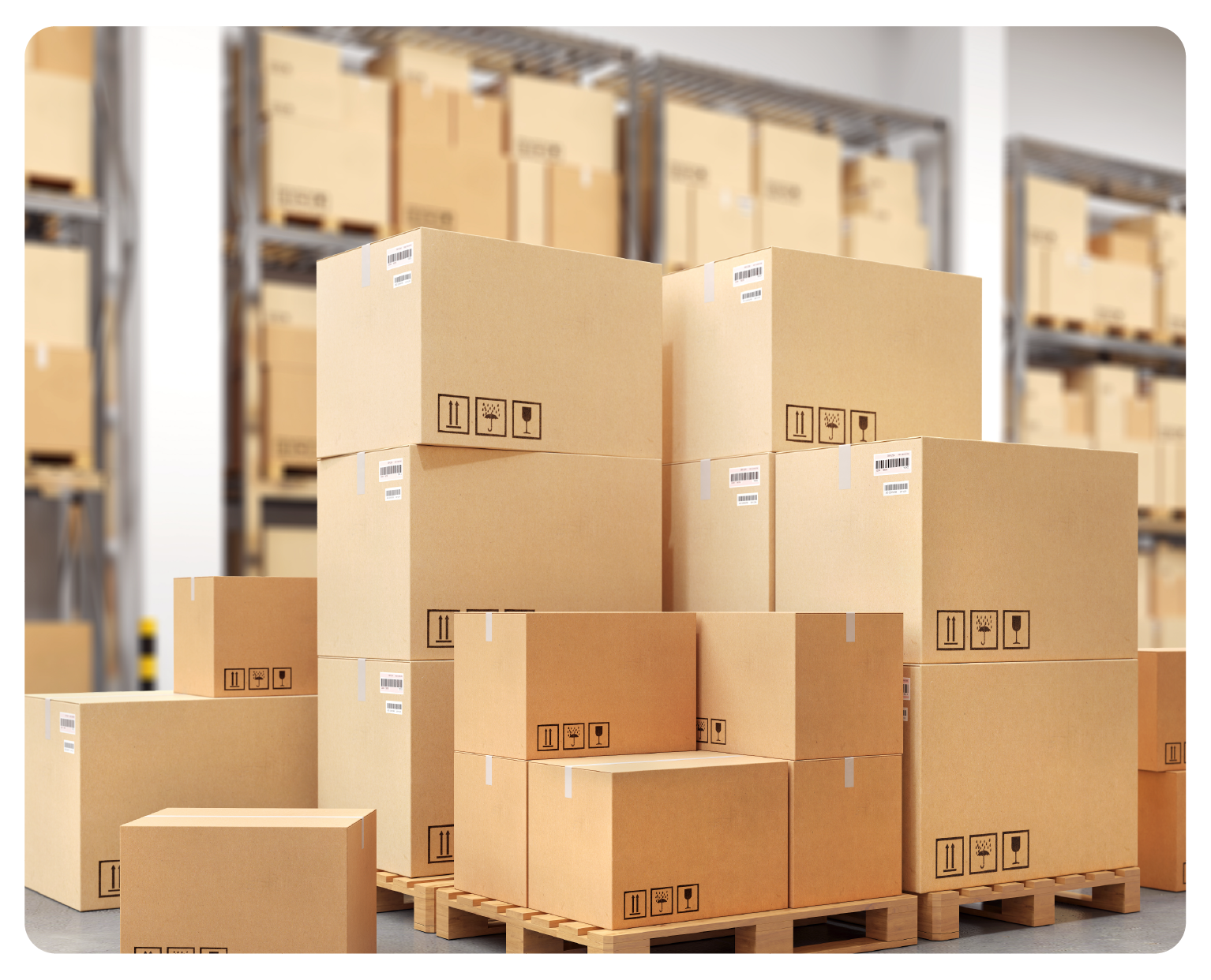Table of Contents
When an online store starts seeing a surge in orders, it’s an exciting milestone. Sales are up, brand recognition is growing, and the business is scaling. But with this growth comes a significant challenge- shipping. What once felt like a manageable task quickly turns into a logistical nightmare. The costs pile up, packaging becomes an endless chore, and unexpected delays start affecting customer satisfaction.
This is where bulk shipping can be a game-changer. Instead of sending out individual packages daily, consolidating orders, optimising the supply chain, and negotiating better rates with carriers can transform shipping into a cost-effective and efficient process. Almost instantly, shipping costs drop, deliveries become more reliable, and profit margins improve. What once seemed like an operational bottleneck turns into a well-oiled system that allows businesses to focus on expansion rather than logistics.
If you’re an eCommerce or D2C seller facing similar challenges, bulk shipping might just be the solution you need. In this guide, by the end you’ll know what is bulk shipping, how bulk shipping works, its benefits, and how you can implement it to optimise your logistics and boost profitability.
What is Bulk Shipping?
Bulk shipping refers to the process of transporting large quantities of products in a single shipment. Unlike individual parcel shipments, bulk shipping consolidates multiple units, reducing transportation costs and improving efficiency. This method is commonly used by eCommerce and D2C brands that ship products in high volumes to customers, fulfilment centres, or retail partners.

How Bulk Shipping Can Supercharge Your Logistics
Reduced Per-Unit Shipping Costs
One of the most compelling reasons to shift to bulk shipping is the reduction in per-unit shipping costs. When shipping items individually, costs quickly add up due to multiple packaging, handling, and transportation charges. With bulk shipping, you spread these costs over a larger volume, leading to significant savings. This cost-efficiency can be a major advantage in competitive eCommerce markets where pricing plays a critical role.
Volume Discounts
Shipping carriers often provide discounts for bulk shipments. The more you ship, the better rates you can negotiate. Many logistics providers offer tiered pricing, meaning that as your shipping volume increases, your per-unit cost decreases. These savings can be reinvested into marketing, product development, or even passed on to customers in the form of better pricing.
Higher Profit Margins
By lowering your logistics costs through bulk shipping, your business can enjoy higher profit margins. When every dollar saved on shipping adds up, it directly contributes to your overall profitability. For D2C brands looking to scale, keeping costs low while maintaining efficiency is key to long-term success.
Lower Packaging Costs
Individual shipments require separate packaging, which not only increases costs but also generates more waste. Bulk shipping allows you to use larger, consolidated packaging solutions, reducing material costs and making your brand more eco-friendly. Many customers today prefer sustainable brands, so reducing packaging waste can also enhance your brand image.
More Reliable Shipping & Fewer Delays
Shipping multiple small orders individually increases the chances of delays, lost packages, or inconsistencies in delivery timelines. Bulk shipping, on the other hand, streamlines the process, ensuring that products reach their destination more reliably. Carriers prioritise bulk shipments due to their efficiency, reducing the likelihood of transit issues.
Now that you know what is bulk shipping and how it can supercharge your logistics, its important to know when to opt for it!
When Should You Consider Bulk Shipping?
Bulk shipping isn’t for every eCommerce business, but if you find yourself frequently sending large quantities of products to fulfillment centers, retailers, or even directly to customers, it’s worth considering. Businesses with high demand, seasonal peaks, or subscription models can particularly benefit from bulk shipping strategies.
How to Get Started with Bulk Shipping
Evaluate Your Order Volume
Assess your monthly shipping data to see if bulk shipping makes sense for your business. Look at your historical sales trends, peak seasons, and customer demand to determine how much inventory you need to ship at once. This analysis will help you avoid unnecessary stockpiling while ensuring you meet demand efficiently.
Choose the Right Carrier
Research and negotiate with shipping carriers specialising in bulk shipments to get the best rates. Some carriers offer specialized services tailored for high-volume shippers, including dedicated support, priority handling, and tracking solutions. Comparing multiple carriers and their pricing structures can help you find the best fit for your business.
Optimise Packaging
Work with suppliers to develop cost-effective, efficient packaging that minimises waste and maximises protection. Consider using durable yet lightweight materials to reduce shipping weight while ensuring that your products arrive safely. Custom packaging solutions can also help optimize storage space and reduce shipping costs.
Implement a Bulk Shipping Strategy
Plan your shipments based on demand forecasting to avoid overstocking or understocking. Use inventory management software to monitor stock levels and predict future sales patterns. This proactive approach allows you to plan bulk shipments more strategically, ensuring that your supply chain remains smooth and cost-effective.
Partner with a Reliable Logistics Provider
Consider working with a third-party logistics (3PL) provider that can handle bulk shipments efficiently. 3PL providers have established networks, warehousing capabilities, and shipping expertise that can streamline the bulk shipping process. Outsourcing your logistics to a trusted partner can help you scale without the burden of managing shipping operations in-house.
Leverage Technology for Shipping Efficiency
Use shipping automation tools and software to manage bulk shipments more effectively. Many platforms integrate with eCommerce stores, allowing you to generate bulk shipping labels, track orders in real time, and optimize shipping routes. Automation can save time, reduce errors, and improve overall operational efficiency.
Monitor Performance and Optimise Costs
Continuously analyze your shipping costs, delivery times, and carrier performance. Regularly reviewing your bulk shipping strategy helps identify areas for improvement, such as switching carriers for better rates, adjusting packaging methods, or renegotiating contracts with suppliers. Staying agile and adapting to market changes will ensure your bulk shipping remains cost-effective and efficient.
How Dispatch Can Help
Navigating bulk shipping can be complex, but with the right logistics partner, it becomes seamless. Dispatch specialises in helping eCommerce and D2C brands optimise their shipping operations, offering competitive bulk shipping rates, advanced automation tools, and a reliable carrier network. Whether you need cost-effective freight solutions, real-time tracking, or tailored shipping strategies, Dispatch simplifies the process so you can focus on growing your business. Get in touch with Dispatch today to take your bulk shipping to the next level.
The Bottom Line
Bulk shipping is a powerful tool that can help eCommerce and D2C sellers reduce costs, improve efficiency, and increase profitability. As your business scales, optimising your shipping strategy is essential to stay competitive. By leveraging bulk shipping, you can enhance your logistics operations, provide a better experience for customers, and ultimately, drive long-term success.
Calculate Your Shipping Rates

| Courier Partner | Mode | Chargeable Weight (KG) | Shipping Rates |
|---|



